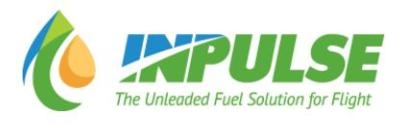Thu, Aug 02, 2012
Can’t Live With It, Can’t Live Without It: What Is Old Is New
By Bruce Brandon
A gnawing question that keeps many in GA up at night is whether there will be fuel in the future for their airplanes. As ANN has reported, there are several companies working on the problem (see previous articles on GAMI and Swift Fuels).Unfortunately it is not just those who fly high compression engines that need to be concerned. Auto gas is a solution for many low compression engines but only as long as it has the proper octane and NO ethanol. It is going to be challenging, but not impossible to get ethanol free auto gasoline. What about high compression engines?

Air Plains Services Corp. is tackling this problem using old technology. Todd Petersen (pictured) of Petersen Aviation, noted for its auto-fuel STCs, obtained an STC for anti-detonation injection (ADI) in 1986 that allowed high compression engines to burn 91 octane unleaded auto fuel. Because the price differential between aviation fuel and auto fuel in 1986 was not large (as it is now) it failed to catch on.
As our previous articles stated, octane is the big issue when lead is removed. When high compression engines came into the inventory in the 1930s, a need arouse to increase the octane. The solution was to use ADI. During WWII ADI was used in most of our front line aircraft including the B-24, P-38, P47, and P-51.
Fast forward to now. Fuel prices are outrageous and even at these exorbitant prices 100LL is going to go away, the only question is when. As stated, auto gas is a possible solution for 80-85 percent of the GA (low compression) fleet but the remaining 15 percent (high compression) have a problem.
Air Plains says the solution is its ADI system branded as Impulse. Impulse uses the 1986 Petersen STC to allow high compression engines operate on 91 octane unleaded fuel. It is currently providing STCs for Beechcraft Barron, Cessna 188 AGtruck and Cessna 210. Aero Plains is working to get the STC expanded to other IO-520, and IO-540 powered aircraft such as the Cessna 206, 180/185 and the Beechcraft Bonanza.

Inpulse injects a mixture of 60 percent methanol, 39 percent demineralized water and 1 percent soluble oil into these high compression engines so that 91 octane fuel works properly. The system consists of a reservoir, lines and control panel that add a total of approximately 42 lbs. (including Impulse fluid) for single engine and approximately 80 lbs. to a twin engine aircraft. Impulse is to be used for five minutes for takeoff and when landing (in case of a go around) and anytime the CHT exceeds 400° Fahrenheit.
Inpulse’s liquid mixture cost approximately $2.30 per gallon to produce. Approximately ten takeoffs can be made before refilling. The cost of the STC/system, including the equipment, is approximately $8k-$9k for single engine aircraft and $11-$12k for a twin.
More News
Waypoint A predetermined geographical position used for route/instrument approach definition, progress reports, published VFR routes, visual reporting points or points for transiti>[...]
Aero Linx: Sentimental Journey to Cub Haven Sentimental Journey Flyin began in 1986 with a group of dedicated volunteers working to provide a sentimental return to Lock Haven, the >[...]
The Pilot Would Often Fly Over Their House At A Low Altitude And That Family Members Would Go Outside To Wave On November 14, 2025, at 1708 eastern standard time, a Jabiru USA Spor>[...]
From 2024 (YouTube Edition): Volatus Infrastructure Paves The Way The name “Volatus” seems to be everywhere these days, popping up in a series of partnerships and proje>[...]
Fortnite Conquers All, Klyde FMI: www.klydemorris.com>[...]
 ANN's Daily Aero-Term (11.29.25): Waypoint
ANN's Daily Aero-Term (11.29.25): Waypoint ANN's Daily Aero-Linx (11.29.25)
ANN's Daily Aero-Linx (11.29.25) NTSB Prelim: Jabiru USA Sport Aircraft LLC J230-SP
NTSB Prelim: Jabiru USA Sport Aircraft LLC J230-SP Classic Aero-TV: Crafting The Future of eVTOL Infrastructure
Classic Aero-TV: Crafting The Future of eVTOL Infrastructure Klyde Morris (11.28.25)
Klyde Morris (11.28.25)




